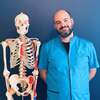Localized ear pain is often caused by inflammation (sometimes as a result of an infection) of the ear. They are more frequent in small children and infants, but can also affect adults. In the absence of a classic and identified cause (such as following teething or ENT infections in children), it is important to consult a doctor in order to identify the cause(s) of the otitis in order to choose an appropriate treatment.
Main causes of ear infections
The inflammation or infection can be located either in the external auditory canal (outside the eardrum) or in the middle ear (inside the eardrum). In the external auditory canal, the most frequent causes are earwax plugs, the presence of a superinfected eczema or a boil and can appear following a bath.
As far as the middle ear is concerned, it is most often an ENT infection that is at fault (e.g. a cold), but it can also occur following a violent shock, a difference in pressure between the outer ear and the inner ear (e.g. during an airplane trip or during scuba diving: this is barotraumatic otitis).
Symptoms of otitis
The main symptom of an ear infection is a sharp, stabbing pain in the ear, often increased by lying down, which may be accompanied by tinnitus (ringing in the ear) and sometimes headache.
Depending on the location of the otitis, the auricle and the skin can also be painful, and sometimes a red, swollen and painful eardrum can be observed due to the accumulation of fluid. This is called serous otitis.
The consequences of an untreated ear infection can be serious and can lead to complete and permanent deafness.
Medical treatment of otitis
The basic medical treatment consists of the administration of a broad-spectrum antibiotic, usually by mouth, to eliminate the infection that is causing the painful inflammation.
In the case of an associated lesion of the eardrum ("pierced eardrum") following a direct trauma or an untreated serous otitis, it is necessary to wait for the healing of the eardrum which can take from a few days to a few weeks according to the importance of the lesion, often accompanied by tinnitus which disappears once the tissues are healed.
Depending on the location of the otitis, the auricle and the skin can also be painful, and sometimes a red, swollen and painful eardrum can be observed due to the accumulation of fluid. This is called serous otitis.
Otitis and osteopathy
The first line of treatment for otitis is mainly medical, using antibiotics to fight the infection. However, osteopathy has a role to play in the prevention of otitis, especially repeated episodes in infants and young children. The main cause of ear infections in young patients is largely related to the congestion of the entire ear, nose and throat (ENT) system caused by the inflammation of the gums that accompanies teething. Furthermore, the close proximity of children in day care centers or nursery schools is also an important factor of contagion, contributing to explain the large number of children suffering from these affections.
If osteopathy cannot do much for the risk of contagion, there are many techniques allowing to limit to the maximum the congestion of the ENT system and thus to decrease significantly the risk of otitis. It is indeed possible to work locally at the level of the ear (more precisely in the region of the temporal bone) but especially a little more distant from the ear itself.
It is indeed important to check the good mobility of the whole cervical spine, particularly in the sub-occipital region (at the connection between the base of the skull and the top of the neck) which includes many small muscles that can participate in limiting the drainage of the ENT apparatus, thus favoring the congestion of the whole. Similarly, there are many techniques that allow us to work on the floor of the mouth (all the muscles that make up the floor of the mouth) as well as on the visceral part of the neck (including the esophagus, the trachea and all the musculoskeletal mechanisms that allow swallowing). The osteopath's action on these structures helps to promote the drainage of the nasal cavities and the entire ENT system, thus limiting the risk of congestion and therefore the repetition of episodes of ear infections.
In adults, it is also important to investigate the proper functioning of the temporomandibular joints (the jaw joints), which may also be related to ear problems. It is also frequent to note the greater vulnerability to ENT problems of patients known as "mouth breathers" and therefore to work on the respiratory mechanics so that the flow of inspired and expired air participates in the good drainage of the whole ENT sphere by techniques targeted on the nose itself, the sinuses or the nasal fossae (itself in the continuity of the Eustachian tubes, the innermost part of the auditory apparatus). These techniques are particularly indicated for patients suffering from sleep apnea syndrome and can also, in certain cases, help to combat major snoring problems.
Finally, in children as in adults, it is often essential to work on the diaphragmatic respiratory mechanics. Indeed, the thoracic movement generated by the contractions of the diaphragm during breathing creates a pressure differential which, once again, favors ENT drainage as if the diaphragm also played the role of a pump.
Your osteopath therefore has a large number of tools that can help limit the risk of ear infections and their recurrence in adults and children alike, without replacing the medical treatment that is essential in case of ENT infection. In case of doubt, do not hesitate to ask your practitioner who, after a diagnosis of the different anatomical structures that may be involved, will be able to tell you if an osteopathic treatment is indicated.

